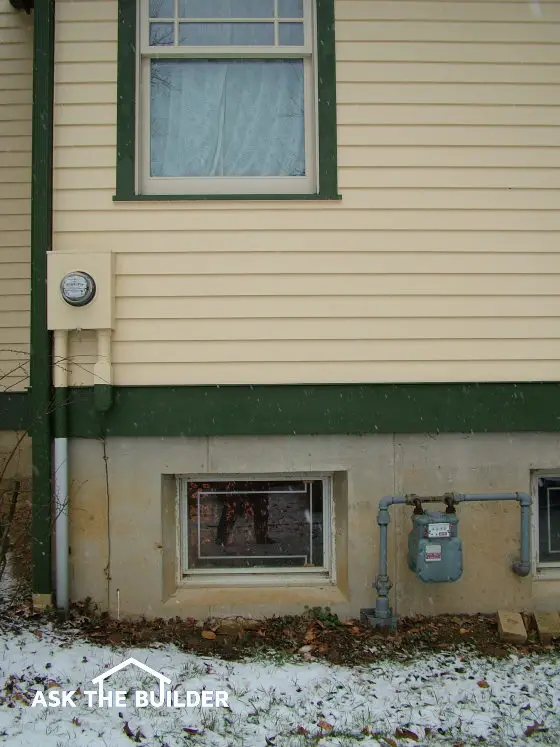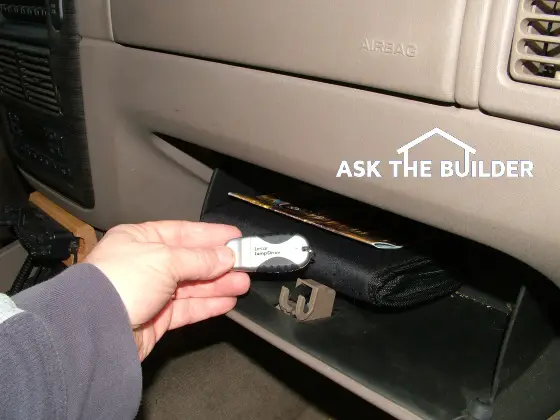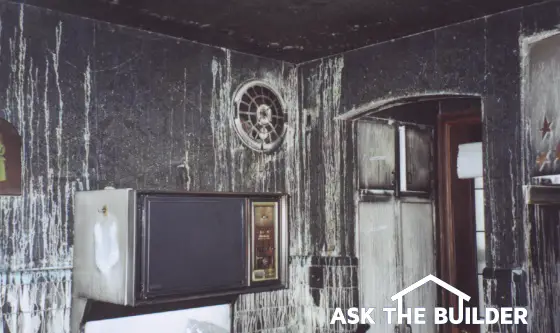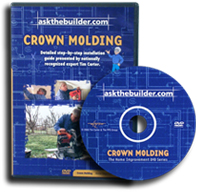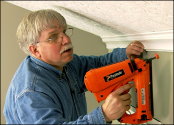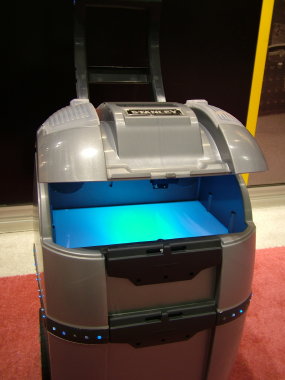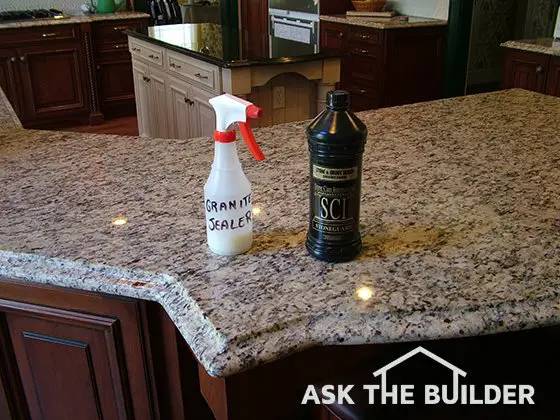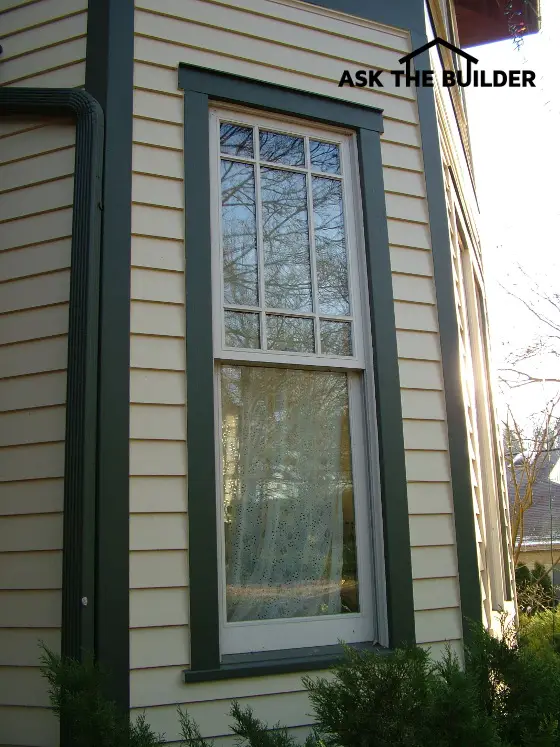Tim: Good morning! Welcome to the Ask The Builder Show here on WGRR. It's great to be here. It's great to have you with me as well. We've got a full team today.
Annetta: Yep.
Tim: (laugh) We've got Annetta.
Annetta: Good morning.
Tim: We've got Travis.
Annetta: Uh-huh.
Tim: We've got Carey.
Annetta: Yeah.
Tim: And we've got me.
Annetta: Yep!
Tim: So that's like four, four people.
Annetta: Me, my four and no more.
Tim: (laughing) Tell us about Cebella. Was she bad again this week?
Annetta: She was, but it caused her to get hurt.
Tim: Oh!
Annetta: Yeah. Cebella's our dog, in case you don't know by now.
Tim: Is she all right?
Annetta: She's okay. She's getting there.
Tim: Okay now.
Annetta: She's okay now. Yeah, she got out from us and got a little hurt. She came back and I don't think she's going to run.
Tim: She's not going to run free anymore, huh?
Annetta: It's going to be a while.
Tim: Yeah.
Annetta: She's kind of scared to even go out to use it (laugh).
Tim: Yeah. I had a problem with my crazy Cinder dog.
Annetta: Uh-huh.
Tim: He's going to be two years old in January, so he's still a puppy.
Annetta: Right, right.
Tim: He's still got some of that puppy in him.
Annetta: Oh, yeah.
Tim: He's gotten a lot better.
Annetta: Uh-huh.
Tim: I told you before how he used to (laugh)... A year ago when we first got him, he was like 6 or 8 months old, he would carry (laugh) entire garbage cans outside the house, you know. He would throw garbage cans up into the air (laughing), and anything that was not bolted down in the garage was outside.
Annetta: He would carry it. Okay.
Tim: Because it was his (laugh). I mean he felt like, `Well, you know, this tool's mine. This bag's mine.' So anyway, he's kind of gotten over that, but he still wants to get out.
Annetta: Uh-huh.
Tim: And, of course, we've got one of the invisible fence things on.
Annetta: Oh, Uh-huh.
Tim: And I'm telling you what, those things work so long as the little battery (laughing) inside that collar thing works. Well, we we re having some trouble recently where it's just like he was kind of getting out. And I put a new battery in; the battery's fine.
Annetta: Uh-huh.
Tim: Well, lo and behold, I take it down to the invisible fence place and I talk to Carey McMannis. Remember, he was on.
Annetta: Yeah, right. I remember him.
Tim: This just goes to show you the problem with modern electronics. That little receiver in the collar...
Annetta: That's on his neck. Yeah.
Tim: ... that's on the dog's neck, that particular one had a very small short circuit in it.
Annetta: Oh-h-h!
Tim: And it was causing the battery to drain down much faster than it should. So, no wonder `ole Cinder boy was getting out!
Annetta: Was getting out! The battery wasn't working. He knew!
Tim: Yeah, because he figured he's walking up close to the wire and...
Annetta: He's not getting zapped as hard (laughing).
Tim: No, no, no! Don't say zapped. The actual term is called `correction' (laugh).
Annetta: Ah-h-h, yeah (laughing).
Tim: And let me tell ya. I had that thing in my hand one day (laughing) and forgot, walked up to that wire.
Annetta: Did you feel it (laughing)?
Tim: Oh, my goodness! Oh!
Annetta: Was your hair standing up (laughing)?
Tim: Oh! It hurts to even think about it! So anyway, so those things really work.
Annetta: Well, she still is just a puppy, so. I mean, she's not even a year old yet.
Tim: I'm sure there are tons of people who are listening who know much more about dogs than you and I.
Annetta: Yeah.
Tim: But I just know that you gotta get past that puppy thing.
Annetta: Yeah, that's what I'm figuring. You know, once we get past the puppy stage... I'm trying to tell my husband, `Just give her one year, just one year.'
Tim: Yeah.
Annetta: Just one year, you know?
Tim: Well, you should be all right, so just be patient. Be patient.
Annetta: Okay. Okay.
Tim: Now, if you want to talk to me about, not so much dogs, because I mean, I like Cinder and I was the last one in my family that wanted the dog, because I know how much work they are, but Cinder and I are good buddies now and we play a lot, but...
Annetta: Same here.
Tim: ... but if you want to talk about home improvement, maybe you've got a question. Of course, now we're into the heating season and you could have furnace questions, air filter questions. I can think of tons of questions you could have. You could have a question about, like today, the weather's kind of up there. It might get to the 50s like it was yesterday, 55; it was a gorgeous day. Is that a good time to paint outside? Because you procrastinated and it's like `Well gosh, I've got to get some stuff done.' Well, is this really the right time? So, whatever your question might be, call me at 749-1035 (repeat).
I want to tell you something new at the website, and this may interest you. I have started a new program at askthebuilder.com where at least five times a week, I'm adding a new column. I know that sounds crazy, but I'm doing it. You've got a couple of choices. You can stop back to the website and just try to find it yourself. It'll be right on the home page.
I've talked about this in the past. I don't push it much, but I'm going to just talk about it a little bit because this is really important. In years past I could easily sign you up to my quick newsletter and send you an announcement via email. Because of all the spam and all these other things, email is just not the best tool anymore to get a message from one person to another. There is technology that's been out on the Internet for years and it's called push technology. It kind of had a bad rap about five or six years ago for a good reason, but they got all those bugs out and now it's called RSS. It's stands for Really Simple Syndication, and it really works a lot like the way you get your newspaper delivered. In fact, we're going to be talking about Barb in a little bit here, who's delivering the paper right now, a question of hers I'm going to answer on the air.
RSS works just like the Enquirer or the Post coming to your house. Now how's that? Well, here's the trouble with email in a way. Email is delivered into your mailbox, but for you to get your email, you have to go to the email box to get it. It requires a trip. It requires you pressing a couple of buttons, doing this, doing that. RSS is different. In other words, imagine if the Enquirer said, `You know what? If you subscribe to our paper, but each day you have to come down to the Enquirer to get it,' well, people wouldn't do that. They wouldn't drive all the way down there, so they wouldn't get the paper! Well, RSS is simple. It simply is technology where there is intelligence in these other computers, and every time I add a new column at my website, this other computer (like a speed burner) knows it. It comes back, it catalogues that new item, and when you turn your computer on and just open up this software (I mean, you can have it automatically open up), it automatically tells you, `Oh, look! Tim published something new yesterday,' or `The New York Times published something new.' There are thousands of websites that have RSS feeds.
So, it's really cool technology. Don't mean to overwhelm you this early in the morning about it. But I'm telling you, you should start to look into RSS and sites that have RSS feeds (and I have one), and you'll automatically be notified every time anything is new on that website. So it's pretty cool stuff.

